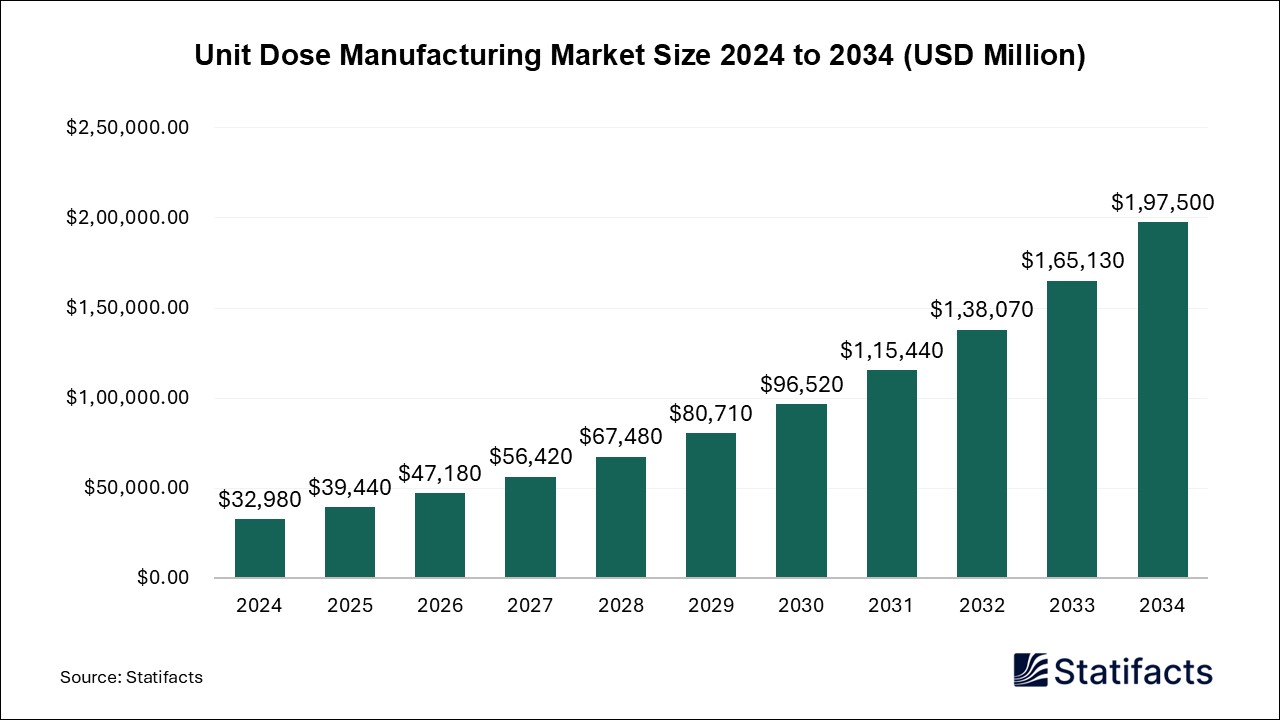
By clicking “Accept All Cookies” you agree to the storing of cookies on your device to enhance site navigation, analyze site usage, and assist in our marketing efforts.
Privacy PolicyDNA Sequencing Market (By Product & Services: Consumables, Instruments, Services; By Technology: Sanger Sequencing, Next-Generation Sequencing, Whole Genome Sequencing (WGS), Whole Exome Sequencing (WES), Targeted Sequencing & Resequencing, Third Generation DNA Sequencing, Single-Molecule Real-Time Sequencing (SMRT), Nanopore Sequencing; By Workflow; By Application; By End-use; By Region: North America, Europe, Asia Pacific, Latin America, Middle East and Africa) Industry Size, Share, Growth, Trends 2025 to 2034.
The global DNA sequencing market was valued at over USD 1.52 billion in 2024 and is projected to reach around USD 10.88 billion by 2034, growing at a robust CAGR of 21.75%, driven by advancements in genomics and personalized medicine.
| Reports Attributes | Statistics |
| Market Size in 2024 | USD 1.52 Billion |
| Market Size in 2025 | USD 1.85 Billion |
| Market Size in 2031 | USD 6.03 Billion |
| Market Size by 2034 | USD 10.88 Billion |
| CAGR 2025 to 2034 | 21.75% |
| Base Year | 2024 |
| Forecast Period | 2025 to 2034 |
What Is Driving the Growth of the DNA Sequencing Market?
The DNA sequencing market is growing steadily as technology continues to transform the fields of genetic research, diagnostics, and biotechnology. Sequencing enables researchers and clinicians to determine the order of nucleotides in DNA, offering insights into genes, mutations, and hereditary conditions. The expansion of clinical and research-based applications in oncology, reproductive health, and infectious disease management is fueling market demand. Large-scale population genomics projects, supported by government funding and private investment, are also accelerating adoption. Pharmaceutical companies are increasingly relying on sequencing data to identify new drug targets and improve therapeutic precision.
How Are Technological Advancements Influencing the Market?
Continuous improvements in sequencing speed, accuracy, and affordability have been central to the growth of this market. The transition from traditional Sanger sequencing to next-generation sequencing platforms has made large-scale genomic analysis both practical and cost-effective. Portable and benchtop sequencing instruments are expanding the technology’s reach to smaller laboratories and emerging economies. Furthermore, the introduction of automation and integrated sequencing workflows has reduced manual errors and processing times, creating a more efficient ecosystem for both clinical and research use.
What Challenges Does the DNA Sequencing Market Face?
Despite its progress, the DNA sequencing market faces several challenges. High equipment and reagent costs remain a barrier to entry, particularly for small and medium-sized laboratories. The massive volumes of genomic data generated by sequencing pose challenges for data storage, interpretation, and security. Ensuring patient privacy and maintaining compliance with regulatory frameworks add to the complexity. Additionally, the shortage of skilled professionals capable of managing genomic data analysis continues to limit the scalability of operations in some regions.
How Is AI Transforming DNA Sequencing?
Artificial intelligence is revolutionizing the DNA sequencing market by improving accuracy, efficiency, and clinical application. AI algorithms are now being used to identify genetic patterns, detect mutations, and predict disease susceptibility with higher precision. Machine learning tools can classify genetic variants and analyze datasets much faster than conventional methods, reducing diagnostic turnaround time. AI also helps automate laboratory workflows and sample analysis, leading to better standardization and reduced operational costs.
What Is the Future Outlook for the DNA Sequencing Market?
The integration of AI with genomic sequencing, cloud computing, and bioinformatics platforms is expected to drive the next phase of market growth. Cloud-based AI solutions enable researchers to collaborate globally, securely sharing data and insights. As costs continue to fall and automation increases, sequencing will become more accessible to hospitals, clinics, and diagnostic labs. The growing application of genomic data in preventive care and precision medicine will further expand the scope of this market. The combination of automation, affordability, and data intelligence positions DNA sequencing as a cornerstone of modern healthcare and life sciences innovation.
| Regions | Shares (%) |
| North America | 40% |
| Europe | 30% |
| Asia Pacific | 20% |
| LAMEA | 10% |
| Segments | Shares (%) |
| Consumables | 45% |
| Instruments | 35% |
| Services | 20% |
| Segments | Shares (%) |
| Sanger Sequencing | 10% |
| Next-Generation Sequencing | 35% |
| Whole Genome Sequencing (WGS) | 15% |
| Whole Exome Sequencing (WES) | 10% |
| Targeted Sequencing & Resequencing | 10% |
| Third Generation DNA Sequencing | 5% |
| Single-Molecule Real-Time Sequencing (SMRT) | 5% |
| Nanopore Sequencing | 10% |
| Segments | Shares (%) |
| Pre-sequencing | 25% |
| Sequencing | 50% |
| Data Analysis | 25% |
| Segments | Shares (%) |
| Oncology | 30% |
| Reproductive Health | 10% |
| Clinical Investigation | 15% |
| Agrigenomics & Forensics | 5% |
| HLA Typing/Immune System Monitoring | 5% |
| Metagenomics, Epidemiology & Drug Development | 10% |
| Consumer Genomics | 15% |
| Others | 10% |
| Segments | Shares (%) |
| Academic Research | 20% |
| Clinical Research | 20% |
| Hospitals & Clinics | 20% |
| Pharmaceutical & Biotechnology Companies | 30% |
| Other Users | 10% |
Published by Kesiya Chacko
| By_Product_&_Services | 2024 | 2025 | 2026 | 2027 | 2028 | 2029 | 2030 | 2031 | 2032 | 2033 | 2034 |
|---|---|---|---|---|---|---|---|---|---|---|---|
| Consumables | 0.68 | 0.82 | 1.01 | 1.30 | 1.49 | 2.01 | 2.18 | 2.72 | 3.17 | 3.84 | 4.79 |
| Instruments | 0.53 | 0.65 | 0.81 | 0.97 | 1.18 | 1.25 | 1.67 | 2.06 | 3.18 | 3.15 | 4.33 |
| Services | 0.30 | 0.38 | 0.43 | 0.48 | 0.66 | 0.81 | 1.11 | 1.25 | 0.99 | 1.94 | 1.76 |
| By_Region | 2024 | 2025 | 2026 | 2027 | 2028 | 2029 | 2030 | 2031 | 2032 | 2033 | 2034 |
|---|---|---|---|---|---|---|---|---|---|---|---|
| North America | 0.61 | 0.73 | 0.87 | 1.09 | 1.32 | 1.70 | 2.13 | 2.43 | 3.28 | 3.80 | 3.89 |
| Asia Pacific | 0.46 | 0.55 | 0.69 | 0.84 | 1.05 | 1.13 | 1.55 | 2.24 | 2.30 | 2.78 | 3.23 |
| Europe | 0.30 | 0.39 | 0.45 | 0.50 | 0.57 | 0.98 | 0.91 | 0.98 | 1.22 | 1.96 | 2.37 |
| LAMEA | 0.15 | 0.18 | 0.24 | 0.32 | 0.41 | 0.26 | 0.37 | 0.38 | 0.54 | 0.40 | 1.39 |
| Subsegment | 2024 | 2025 | 2026 | 2027 | 2028 | 2029 | 2030 | 2031 | 2032 | 2033 | 2034 |
|---|---|---|---|---|---|---|---|---|---|---|---|
| Consumables | 0.68 | 0.82 | 1.01 | 1.30 | 1.49 | 2.01 | 2.18 | 2.72 | 3.17 | 3.84 | 4.79 |
| Instruments | 0.53 | 0.65 | 0.81 | 0.97 | 1.18 | 1.25 | 1.67 | 2.06 | 3.18 | 3.15 | 4.33 |
| Services | 0.30 | 0.38 | 0.43 | 0.48 | 0.66 | 0.81 | 1.11 | 1.25 | 0.99 | 1.94 | 1.76 |
| Subsegment | 2024 | 2025 | 2026 | 2027 | 2028 | 2029 | 2030 | 2031 | 2032 | 2033 | 2034 |
|---|---|---|---|---|---|---|---|---|---|---|---|
| North America | 0.61 | 0.73 | 0.87 | 1.09 | 1.32 | 1.70 | 2.13 | 2.43 | 3.28 | 3.80 | 3.89 |
| Asia Pacific | 0.46 | 0.55 | 0.69 | 0.84 | 1.05 | 1.13 | 1.55 | 2.24 | 2.30 | 2.78 | 3.23 |
| Europe | 0.30 | 0.39 | 0.45 | 0.50 | 0.57 | 0.98 | 0.91 | 0.98 | 1.22 | 1.96 | 2.37 |
| LAMEA | 0.15 | 0.18 | 0.24 | 0.32 | 0.41 | 0.26 | 0.37 | 0.38 | 0.54 | 0.40 | 1.39 |
Urology Endoscopes Market (By Product Type: Cystoscopy, Ureteroscopy, and Others; By Application: Urethral Malignancies, Urinary Bladders, Urolithiasi...
To get full access to our Market Insights, you need a Professional Account or a Business Suite.

You will receive an email from our Business Development Manager. Please be sure to check your SPAM/JUNK folder too.

You will receive an email from our Business Development Manager. Please be sure to check your SPAM/JUNK folder too.

Our customers work more efficiently and benefit from


